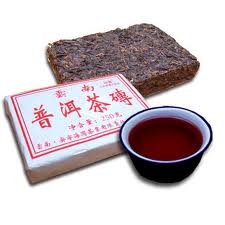Does the Cup Matter?
You wouldn’t serve champagne in a brandy snifter — or expresso in a mug — so why not special teacups for specific teas?
That’s the challenge that faced ceramics designer Peter Ting and tea smith Timothy d’Offray of 1660 London. Ting, whose work is collected the Victoria and Albert Museum, London, and whose clients include HM the Queen (state gifts), Prince Charles, (china pattern based on his personal tartan) and luxury brands including Asprey, has worked in the luxury sector for over 20 years. D’Offray, the proprietor of Postcard Teas in London, sells his teas (some sourced from small-family farms) and blends to stores such as Harrods, Dean & Delucca, and Liberty.
What type of tea would be best for green, black and blended, fragrant teas? After tasting countless cups, Ting came up three designs based on “on what I hated and liked about gaiwan.” (For those not up on tea lore, a gaiwan is a serrated, lidded cup and bowl that is used in tea tastings.) Ting’s teacups, all made of white porcelain, are an elegant solution.
The results won a Best New Product award at the 2012 World Tea Expo and were introduced at a seminar with Ting and famed tea expert, writer, and fellow Londoner Jane Pettigrew, who selected the teas tasted. Six teas were sampled in each of Ting’s cups: White tea, Japanese sencha, rock oolong, Earl Grey, assam, chai and chai with milk.
The white porcelain cups were lined up, and with tasting sheets at the ready, participants began tasting and rating on a scale of 1 out of 4. Granted, one person’s cuppa heaven is another’s bitter vetch, but there was a general agreement over which tea tasted best in which cup. Here are the three Ting-designed cups. Try and guess which tea is suited for which cup.



It has a lot to do with how we taste. There are four tastes: Bitter, sour, salty and sweet. While it was once thought that different areas of the tongue (front, side, center) experienced taste differently, that theory has been largely discounted. As Pettigrew explained, specialists now believe that taste is experienced all over the tongue, although the center of the tongue seems to have the least receptors. Equally important is that the tongue has around 10,000 receptors, while the nose has 25 million.
The different aromas you smell for different teas are related to the volatile compounds in each tea. There are four main components: Green aroma; light, fresh flowery (related to black tea); heavy flowery typical of green oolongs, and roasted characteristic of darker oolongs. Different categories of teas (green, oolong, black, etc.)have different ratios and concentrations of these compounds. For example, the intensity of the aroma in green tea is about 100 times less than that of black tea. The challenge was to find out how the shapes of the cups maximized the characteristics of the tea.
What cup do you think captures the delicate aroma white tea or Japanese sencha? If you guessed, #1, the first tea cup with the fluted lip, you were right. This cup seems to enhance the scent and taste much more than #3, which felt heavier.
What cup went with Earl Grey, with its aroma of bergamot? Consensus was the #2, the tulip shape, captured the aroma best. The tulip shape also maintained heat better than the other two. This shape was also the favorite of the chai drinkers. Because you had to tilt your head back a bit take a sip, there was more opportunity for the aroma to hit.
Now what about #3? This was the favorite of the strong black teas — the assam and also the chai with and without milk. Without a foot or a flute, it was a simple cup that let the aroma and taste come through directly. It also cooled quicker than the other two cups, a good design element when dealing with hot black tea.
Fun sip: The fluted edge cup (#1) felt much thinner than #3, the teacup aimed at sturdier black teas. But the thickness is the same.
So the next time you pour yourself a cup, think about shape and size. Decide for yourself if it matters.


